Understanding Bee Bites: Effects and Treatments
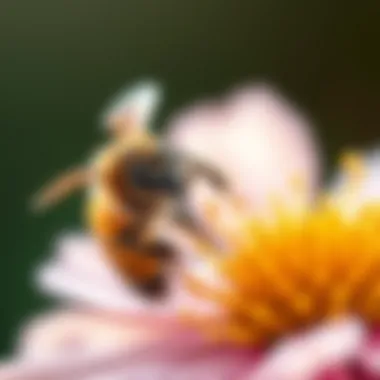
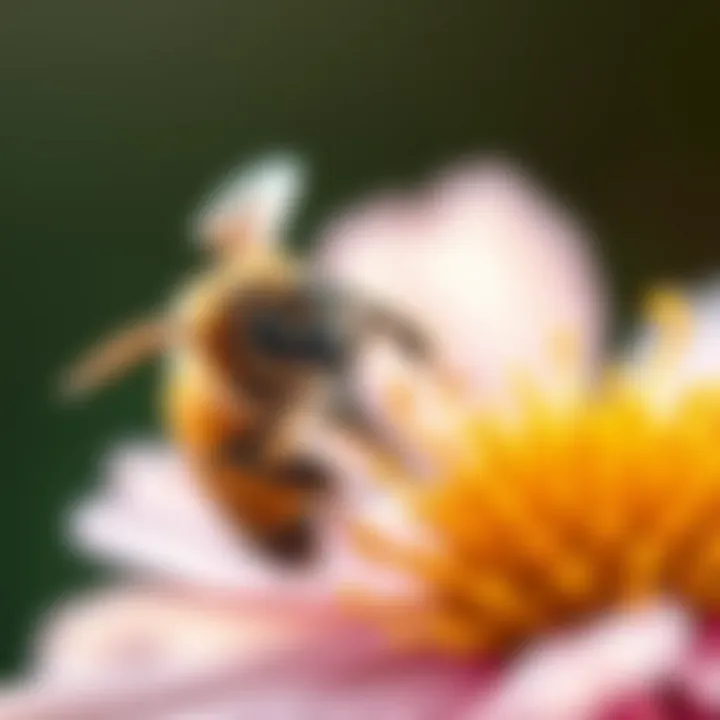
Animal Species Profile
Preface to the animal species
Bees are remarkable creatures, often considered the backbone of our ecosystems. These insects belong to the superfamily Apoidea, encompassing thousands of species worldwide. While many can distinguish between bees and wasps, the true diversity of this group extends far beyond just the honeybee. Bumblebees and solitary bees, for instance, each boast their unique traits and behaviors, reflecting the incredible adaptability that defines bees.
Physical characteristics and appearance
The physical appearance of bees can vary significantly across species. In general, most bees feature a robust, hairy body, perfect for collecting pollen. For example, the honeybee has a distinctive amber and black striped pattern, while bumblebees display a bolder yellow-and-black coloration. Solitary bees, like the leafcutter, can often be mistaken for flies due to their more slender forms. The varying sizes and colors among bee species offer an insight into their ecological niches and adaptations in different environments.
Natural habitat and distribution
Bees are found almost everywhere on the planet, except in extremely cold environments like the Arctic. They inhabit diverse ecosystems, from meadows to forests and deserts. Honeybees thrive in managed colonies, typically supported by humans for honey production, whereas some solitary bees prefer developing their nests in hollow stems or underground burrows. The distribution of bees reflects their adaptability, showing how they have evolved to occupy different niches across climates and terrains.
Behavior and social interactions
Many bee species display fascinating behaviors, particularly when it comes to social structures. Honeybees, for instance, live in intricately organized colonies containing a queen, workers, and drones. These bees communicate through dances to inform each other about food sources or threats. On the other hand, bumblebees form smaller, loose colonies. Each bee behaves differently based on its role within the group, united by a common goal of survival and reproduction. Solitary bees, in contrast, tend to operate independently, with each female responsible for building her nest and raising offspring. This variation in behavior showcases the adaptability of bees within the insect world.
Conservation & Wildlife Efforts
Overview of conservation status
Bees play a crucial role in pollination, significantly impacting agriculture and natural ecosystems. However, many bee species are currently facing declining populations due to habitat loss, climate change, and pesticide use. The International Union for Conservation of Nature (IUCN) has flagged numerous bee species as endangered, underscoring the need for urgent conservation actions.
Threats to the species
The primary threats bees face include:
- Habitat loss: Urbanization and agricultural expansion reduce their natural environments.
- Pesticides: The use of chemicals can harm bees directly and indirectly by disrupting their foraging patterns.
- Climate Change: Alterations in climate can impact blooming seasons and food availability.
- Diseases: Pathogens and pests like varroa mites can devastate colonies.
Conservation initiatives and organizations
Several organizations are working diligently to conserve bee populations. Groups like the Xerces Society focus on protecting pollinators and advocating for sustainable practices. Others like Pollinator Partnership promote public awareness and education about the importance of bees in our ecosystems. Collaborative global efforts are underway to create pollinator-friendly habitats and support farmer practices fostering biodiversity.
Success stories and impact
Some notable success stories include localized efforts that have led to the recovery of certain bumblebee species in specific regions. Targeted conservation practices, like planting native wildflowers and reducing pesticide use, have shown positive impacts on bee populations. These successes highlight the importance of continued commitment and engagement in conservation efforts, demonstrating that positive change is achievable.
Unique Facts & Trivia
Little-known facts about the animal
Did you know that some bee species are excellent mimics? For instance, certain bee flies look strikingly similar to bees, which helps them avoid predators.
Surprising behaviors or adaptations
Some solitary bees, like the mason bee, can use mud or plant materials to construct their nests, showcasing remarkable resourcefulness.
Fun trivia and quirky behaviors
Among the countless quirks of bees, the honeybee can recognize human faces, a skill usually associated with larger mammals. This ability helps them navigate their environment more effectively.
Record-breaking feats or abilities
Honeybees have the impressive ability to fly over five miles from their hives in search of food. This adaptability allows them to exploit a variety of floral resources, contributing to their success in various environments.
Pet Care & Tips
Choosing the right pet for your lifestyle
If you're considering keeping bees, it's essential to evaluate your lifestyle. Beekeeping requires commitment and time, making it crucial to understand the responsibilities involved.
Basic care requirements and habitat setup
Creating a suitable habitat for bees involves installing hives in sunny locations with access to diverse foraging sources. It's beneficial to ensure a pollution-free environment to keep your bees healthy and productive.
Health and wellness tips for pet longevity
To promote the longevity of your bee colonies, regular monitoring for diseases and pests is vital. Providing ample food sources in the form of sugar water or pollen can also support well-being during harsh conditions.
Training techniques and behavioral enrichment ideas
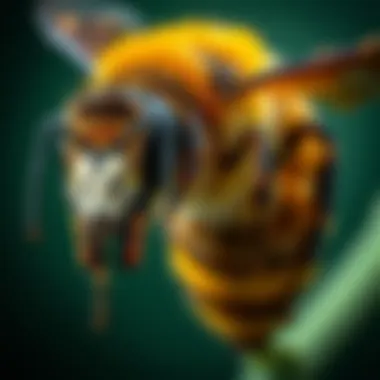
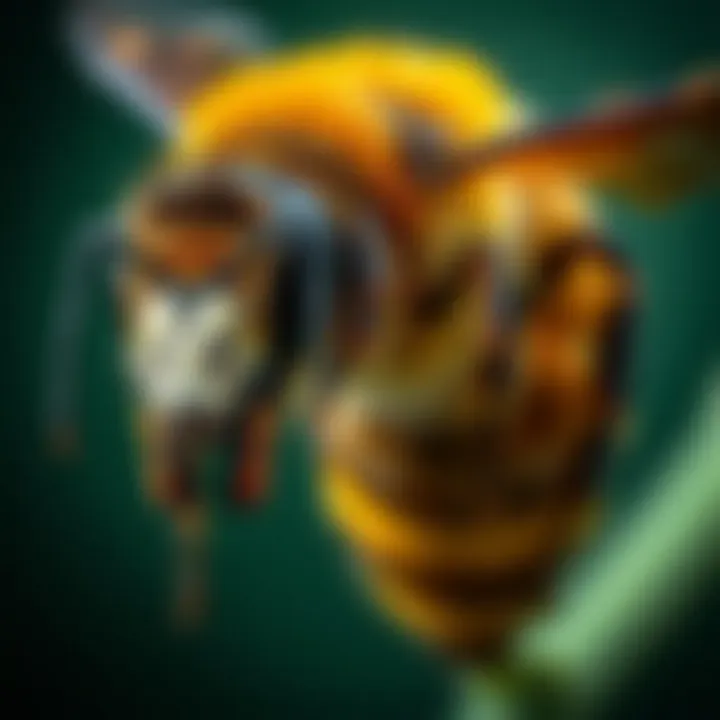
While bees don't require training in the conventional sense, fostering a healthy environment through the right floral diversity helps create a thriving habitat for your bee population. Providing varied planting—native flowers, herbs, and shrubs—can ensure a more enriching experience for both the bees and the local ecosystem.
Intro to Bee Bites
Understanding bee bites is crucial for anyone spending time outdoors, especially wildlife lovers and educators. While many people are familiar with bee stings, the nuances of bee bites often remain obscure. Why does this distinction matter? Recognizing the specificities can influence how we respond to encounters with these creatures. Bees are not just nuisances; they serve as crucial indicators of environmental health and play a vital role in our ecosystem.
Defining Bee Bites and Stings
Here we begin by distinguishing bee bites from stings. A bee bite refers to the action of a bee using its mandibles to grasp or hold onto something, which can happen when a person attempts to handle or swat a bee. Stings, on the other hand, involve the injection of venom from the bee's sting, a defense mechanism or method of subduing prey. Both interactions can lead to discomfort but share different mechanisms and implications for health.
To dissect further, a bee's anatomy helps clarify these actions. While bumblebees often use their bites when they feel threatened, honeybees are more likely to rely on their ability to sting for defense. Accordingly, bites may lead to minor irritation, while stings may escalate to allergic reactions in sensitive individuals.
Importance of Bees in Ecosystems
As we navigate the topic of bee bites, the significance of bees in ecosystems cannot be overstated. They play a pivotal role in pollinating a myriad of plants, which in turn support our agricultural systems and biodiversity. Societies revolve around the fruits of their labor, yet the simple yet powerful existence of bees often goes unrecognized.
The ecological repercussions of bee decline are profound. Reduced bee populations jeopardize food security, affecting crops like apples, almonds, and tomatoes—fruits and vegetables that are essential for a balanced diet.
Bees are often regarded as unsung heroes, tirelessly toiling to sustain the intricate web of life that surrounds us.
To gain a deeper appreciation of the way these insects affect our daily existence, one must consider them as integral components of the ecosystem rather than mere pests. Education on the value of bees, alongside an understanding of the implications of bites and stings, creates a foundation for proactive conservation efforts. In summary, recognizing the role of bees extends beyond avoiding bites; it’s about nurturing a respectful and informed coexistence.
The Biology of Bees
Understanding the biology of bees is crucial for recognizing their behavior and interactions, especially concerning bee bites. Bees are not just simple insects buzzing around; they are intricate creatures that play pivotal roles in our ecosystems. Knowledge about their biology informs us about their social structures, communication methods, and the biological mechanisms that lead to bites and stings. From the way they build hives to how they produce honey, every aspect of their biology has implications for their behavior and, ultimately, for human interactions with them.
Anatomy of Bees
The anatomy of bees is fascinating and complex. Generally, bees have three main body sections: the head, thorax, and abdomen.
- Head: The head of a bee contains its eyes and antennae, which are vital for detecting scents and navigating. They have two large compound eyes made up of thousands of tiny lenses, allowing them to see a wide spectrum of colors, especially ultraviolet light. The mouthparts are adapted for collecting nectar and pollen, with a long proboscis that can extend to reach flowers.
- Thorax: This section houses the bee's wings and legs. Bees typically have four wings, which allow them to fly with precision and agility. Each leg is equipped with specialized structures for pollen collection, such as pollen baskets on the hind legs, making them efficient pollinators.
- Abdomen: The abdomen contains vital organs responsible for digestion and reproduction. In certain species, the abdomen is also where the stinger is located, a syringe-like device designed to deliver venom when a bee feels threatened. This stinger is more commonly known in the context of bee stings, but it does relate to how they may bite as well.
The anatomy informs how bees interact with their environment and why they may exhibit certain behaviors around humans, including biting.
Bee Behavior and Communication
Bees possess a rich behavioral repertoire, which they use to communicate with one another and interact with their surroundings. One striking aspect of bee behavior is their social structure; many species live in colonies with a clear division of labor. Each bee has its role, whether it's foraging for food, tending to the queen, or defending the hive. This social organization is a marvel; without it, their complex lifestyles couldn't thrive.
Communication among bees primarily occurs through pheromones and dances. When foraging, bees will perform a unique dance known as the waggle dance. This dance conveys information about the distance and direction of food sources. Such communication is vital in their survival and plays an indirect role in the potential for bites. If a bee perceives that its food source is threatened, it may choose to defend its territory, possibly resulting in a bite.
Additionally, bees exhibit defensive behaviors when feeling threatened. Their first instinct is often to sting, but in certain situations, they may bite to fend off perceived threats more swiftly. Understanding these behaviors helps us to navigate human-bee interactions more safely and respectfully.
Mechanics of Bee Bites
The discussions surrounding the mechanics of bee bites offer crucial insights into both the biology of these creatures and their interaction with humans. Understanding how and why bees bite is not merely of academic interest; it also has significant implications for safely navigating situations where humans and bees converge. The greater awareness about this topic can help in reducing the anxiety that often accompanies bee encounters, especially for those allergic or fearful of these pollinators.
How and Why Bees Bite
Biting behavior in bees, while less common than stinging, plays a significant role in their social structure and defense mechanisms. When under threat, particularly in their hive, bees may resort to biting intruders or threats. This behavior is primarily seen in honey bees, which may use bites as an initial warning before escalating to stinging.
- Reasons for Biting:
- Defense: Bees defend their colony from perceived threats, and bites serve as a signal to back off.
- Hierarchy Enforcement: In tight-knit hives, minor skirmishes can occur among bees as they establish dominance or space.
- Nurturing: Interestingly, bees can also bite as part of grooming or caring for their young.
Typically, when a bee bites, they clamp down with their mandibles, sometimes causing minor redness or irritation. The impact of a bite may not be as severe as a sting, but it is worth noting that allergic reactions can occur, which may complicate the response needed.
Differences Between Bites and Stings
While both bites and stings originated from similar defensive instincts, they are quite different in nature and implications for humans. Understanding these differences is essential for proper response strategies and dealing with bee interactions.
- Mechanics of Action:
- Symptoms:
- A bite involves piercing the skin using the bee's mandibles without the release of venom. Instead, it may cause some physical discomfort or irritation.
- A sting, on the other hand, involves the insertion of a barbed stinger, delivering venom that can provoke a strong allergic response in susceptible individuals.
- Bites tend to manifest as localized soreness, often with mild swelling and redness.
- Stings frequently lead to more intense reactions, possibly extending far beyond the bite site, accompanied by pain, itching, and even more serious systemic reactions in those with allergies.
The distinction is essential: while a bite is discomforting, a sting poses more significant health risks.
Considerations for safety during outdoor activities should incorporate these differences. If someone is bitten, observing reactions closely is key, especially if allergic history exists.
In summary, the mechanics of bee bites tell a broader story about how these creatures interact with their environment. Understanding these nuances can not only enhance our respect for these vital pollinators but also inform better coexistence strategies.
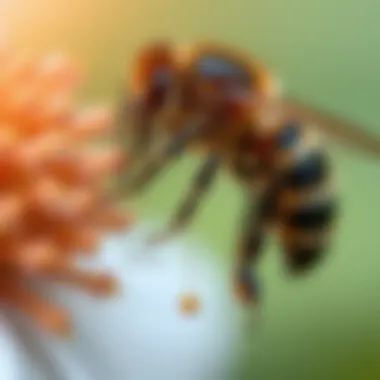
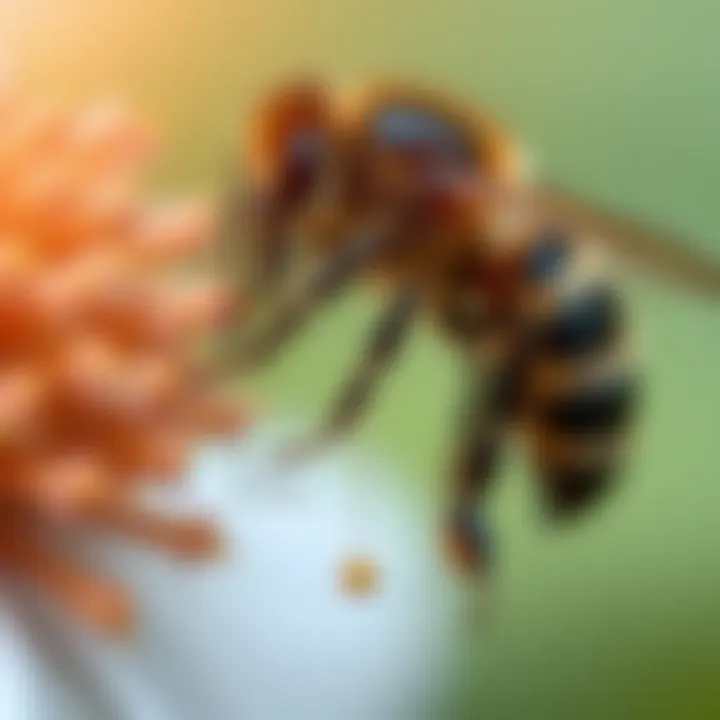
Health Implications of Bee Bites
Understanding the health implications of bee bites is crucial for anyone who interacts with these insects, whether in a garden, on a hike, or even in urban settings. While many perceive bees as harmless contributors to our ecosystems, awareness of the potential risks associated with bee bites cannot be understated. A bee bite, while often dismissed as a minor annoyance, can lead to immediate physical reactions and carry longer-term health considerations for some individuals.
The various implications can impact our daily interaction with bees and also provide insights into the importance of being vigilant in their presence. A clear understanding of the possible reactions can lead to timely and proper responses that may mitigate adverse outcomes, significantly enhancing human-bee coexistence. From allergic reactions to secondary infections, acknowledging the breadth of health implications serves both animal lovers and casual outdoor enthusiasts alike.
Immediate Reactions to Bee Bites
When someone encounters a bee bite, the immediate reaction can vary widely from person to person. Generally, individuals may experience symptoms that include:
- Redness and Swelling: Typically, the site of the bite may become inflamed, leading to redness and swelling that can resemble a small, raised bump.
- Pain and Discomfort: The intensity of pain can range from mild itching to a sharp pinch that lingers for a while. This discomfort may prompt one to seek relief quickly.
- Allergic Reactions: In more severe scenarios, a bee bite could lead to hives, difficulty breathing, or swelling beyond the bite area, potentially indicating an anaphylactic reaction.
Notably, the reason behind these reactions stems from the bee's biological makeup. Bees possess venom that can trigger the body’s immune response, prompting the reactions mentioned above. Understanding this response is key to addressing immediate symptoms effectively. For instance, applying a cold compress can alleviate some swelling, while over-the-counter antihistamines may reduce irritation.
"A timely response can make all the difference in managing the discomfort of a bee bite."
Long-term Effects and Allergies
Long-term implications of bee bites deserve careful consideration, particularly for individuals who may develop allergies over time. The phenomenon of increasing sensitivity to bee venom is not uncommon. Some key points to ponder include:
- Allergic Sensitization: Different bodies respond uniquely to bee bites. Individuals who experience multiple bee bites over time may develop an allergy, leading to significantly heightened responses with future encounters. This can manifest in severe reactions demanding urgent medical attention.
- Potential for Anaphylaxis: For some, especially those already possessing allergies, a bee sting can trigger anaphylaxis, a life-threatening condition that requires immediate intervention. It’s crucial to recognize the signs early, which can include swelling of the throat and mouth, rapid heartbeat, or fainting.
- Psychological Effects: Long-term injuries from bites or allergies can lead to anxiety in individuals regarding outdoor activities, dismantling the joys of nature and leading to fear associated with bees.
Addressing these long-term health effects involves strategies that prioritize safety while also considering awareness and education around bee behavior and their ecological significance. People are encouraged to carry an epinephrine auto-injector if they know they have severe allergies, and regular consultation with an allergist can provide tailored approaches to managing bee interactions.
In grappling with the implications of bee bites, a balanced view emerges that encourages appreciation of bees' vital roles while acknowledging the need for caution in our encounters.
Treatment Options for Bee Bites
When it comes to bee bites, understanding the treatment options is crucial for anyone who finds themselves in a sticky situation with these remarkable insects. Knowledge is power, and having a clear set of approaches to manage bee bites not only ensures immediate relief but can also prevent potential complications. The focus here is on practical, effective methods that can be employed swiftly and with confidence, reducing discomfort and fostering a healthy recovery.
First Aid Techniques
The moment you realize you’ve been bitten by a bee, the first order of business is to stay calm. Panic can exacerbate the situation and lead to a hasty response that may worsen any symptoms. Here are practical steps to follow, ensuring you treat the bite effectively:
- Clean the Area: Use mild soap and water to gently clean the area where the bite occurred. This helps remove any dirt or potential irritants that could lead to infection.
- Cold Compress: Apply a cold pack or a cloth dampened with cold water to the bite site. This can help reduce swelling and numb the pain. Avoid direct ice on the skin; wrapping it in a cloth is the best practice.
- Over-the-Counter Pain Relief: Non-steroidal anti-inflammatory drugs, such as ibuprofen or acetaminophen, can help manage pain and reduce inflammation.
- Antihistamines: If there’s itching or more significant swelling, antihistamines like diphenhydramine may alleviate these symptoms. However, it's important to consult with a healthcare provider if this is your first experience with a bee bite.
- Topical Remedies: Calamine lotion or hydrocortisone cream can soothe itching and irritation at the site. Apply these as directed for best results.
Following these first aid techniques can make a world of difference, providing immediate comfort while your body begins to heal.
When to Seek Medical Attention
Not every bee bite requires a trip to the doctor, but some conditions warrant immediate medical evaluation. It's essential to recognize the signs that indicate it's time to seek professional help:
- Severe Allergic Reactions: Symptoms such as difficulty breathing, swelling of the face or throat, rapid heartbeat, or dizziness indicate anaphylaxis. This is a medical emergency requiring immediate treatment.
- Signs of Infection: If the bite area becomes increasingly red, warm, or swollen, or if you develop a fever, it could signify an infection. Prompt medical intervention is necessary to prevent further complications.
- Persistent Pain or Swelling: If the pain doesn’t improve with basic treatments or if swelling escalates beyond a few days, consulting a healthcare professional can help rule out any serious issues.
- Underlying Health Conditions: If you have a compromised immune system or other health conditions, getting checked out after a bee bite is wise, even if your symptoms seem minor.
By recognizing when to seek medical attention, you can prevent minor issues from becoming major health concerns. Stay aware of your body’s signals, and prioritize your health.
"An ounce of prevention is worth a pound of cure."
Stay informed and equipped with knowledge about bee bites, and you’ll be well on your way to minimizing discomfort and ensuring safety in future encounters.
For more information, you can refer to sources like Wikipedia, Britannica, or CDC.
Understanding how to respond to bee bites is not just about treatment; it's about respect for these vital creatures and our shared environment.
Preventing Bee Bites
Preventing bee bites is an essential aspect of any discussion regarding our interactions with these vital creatures. Understanding the ways to minimize encounters with bees, while also safeguarding both humans and bees themselves, is a crucial step toward fostering a harmonious relationship. In this section, we will delve into the nuanced considerations of environmental factors and personal protective measures that can significantly reduce the likelihood of bee bites.
Environmental Considerations
One cannot overstate the influence of environmental factors on bee behavior. Bees, like many other creatures, are sensitive to their surroundings, and small changes can provoke significant consequences. For instance, bees are usually attracted to vibrant colors and sweet scents, which can be found in many flowers as well as synthetic fragrances used in personal care products.
To minimize the chances of bee encounters, consider the following:
- Avoiding Bee-attracting Plants: If you have a garden or outdoor space, choose plants that are less likely to attract bees. While flowers add beauty, opting for less vibrant alternatives can help reduce the presence of bees. Varieties like marigolds, ferns, and certain herbs may be a safer wager.
- Cleaning Up Outdoor Areas: If you enjoy picnics or gatherings outside, be mindful of food waste. Crumbs and spills attract bees. After meals, make it a habit to clean up, discarding any leftovers in sealed containers or trash bins.
- Seasonal Awareness: Be aware of the time of year. Bees are especially active during spring and summer. During these months, staying vigilant about your surroundings can make a difference.
By taking these environmental considerations into account, one can foster a more bee-friendly atmosphere while also mitigating the risk of bites.
Personal Protective Measures
In addition to environmental factors, personal protective measures play a significant role in preventing bee bites. These measures can often be simple, yet effective in reducing risk.


- Dressing Wisely: Wearing the right clothing can deter bees. Opt for lighter shades over dark colors as bees might perceive darker hues as threats. Also, long sleeves and pants can create a barrier between your skin and bee encounters.
- Avoid Strong Scents: As mentioned before, strong perfumes, deodorants, or fragrant lotions can attract bees. Opt for unscented products when spending time outdoors. Your skin’s natural scent is less appealing to bees.
- Mindful Movements: Quick, erratic movements can attract attention from bees. Move slowly and calmly if you encounter a bee. Swatting at them usually provokes an aggressive response.
- Using Bee-Repellent Clothing: Some outdoor gear is designed with bee-repellent materials. These items can be particularly beneficial for those who spend extended time in areas known for bee activity.
"Understanding and respecting the natural instincts of bees can significantly lead to an improved coexistence and reduce the chances of bee bites."
For more information on bees and their behaviors, visit Wikipedia on Bees or check out Britannica on Bee Species. You can also explore community forums like Reddit's Beekeeping Community for tips and shared experiences.
The Interaction Between Humans and Bees
The relationship between humans and bees can be likened to a delicate dance, where mutual respect and awareness lead to harmony. As bees play a crucial role in pollination and sustaining food systems, understanding how our actions can affect their behavior is essential. This section delves into the complexities of human-bee interactions, highlighting the significance of urban environments and the importance of educational initiatives aimed at fostering awareness.
Impact of Urbanization on Bee Behavior
Urbanization has transformed landscapes, changing the life of bees in both beneficial and detrimental ways. As cities sprout up like weeds in a garden, bees must adapt to a new world — one dominated by concrete and steel instead of flowering plants. In urban areas, green spaces and gardens become vital havens for foraging.
- Habitat Fragmentation: With development encroaching on natural habitats, bees often find their foraging areas diminished. Urban gardens, parks, and green roofs can provide temporary relief, but the scope is limited.
- Access to Nectar: Some cities are incorporating more flowering plants. More blooms lead to more food for bees. Yet, the question remains whether these plants are sufficient in volume and diversity.
- Pollution: Increased air and light pollution can disorient foraging bees, making it tougher for them to navigate. Changing climates further complicate things, as flowers may bloom at different times due to altered weather patterns.
Bees can be found thriving in certain urban environments, where creative landscape design embraces biodiversity. Understanding these changes can help adjust our urban planning to promote healthy bee populations, allowing us to coexist and take advantage of their critical ecosystem services. By taking proactive steps to create more bee-friendly habitats, urban residents can become allies in the fight for bee conservation.
Educational Programs on Bee Awareness
Education is a powerful tool when it comes to building bridges between humans and bees. Initiatives aimed at educating the public about the significance of bees are vital for promoting coexistence and respect. Here are ways in which such education efforts can flourish:
- Workshops and Seminars: Local communities can host workshops that teach about the importance of bees and how to create environments that support them.
- School Programs: Integrating bee-related curricula into schools can inspire future generations. Learning about life cycles, ecosystems, and the critical role bees play can spark interest in environmental stewardship.
- Community Gardens: Establishing communal gardening spaces encourages local citizens to participate in bee-friendly planting. These gardens can serve as teaching grounds where people learn about native flora that attract bees.
"The more we educate ourselves and those around us, the better equipped we are to protect our buzzing companions."
Through educational initiatives, communities can not only help alleviate misconceptions about bees but also empower residents to take action in support of these crucial pollinators. Ultimately, fostering a culture of understanding and appreciation for bees can prove beneficial in balancing urban life with nature’s needs.
By examining the interaction between humans and bees, we uncover the potential for collaboration. Insights gained from these discussions can guide actions that support bee health while also enriching our communities with the beauty and productivity they bring.
Biodiversity and Conservation Efforts for Bees
The significance of biodiversity and conservation efforts for bees cannot be overstated. As key players in the global ecosystem, bees not only contribute to the pollination of numerous plants but also support the health of entire food webs. By fostering a diverse array of plant species, bees enhance the resilience of ecosystems, paving the way for various animal species to thrive.
Bees influence agricultural productivity as well. With their diligent pollination, they increase crop yields for important fruits and vegetables, ensuring food security for human populations. According to a report by the Food and Agriculture Organization (FAO), around 75% of the world’s food crops depend on animal pollination, predominantly by bees. Without them, the decline in crop production could lead to higher prices and lower nutritional quality in diets.
However, bees are facing critical threats due to habitat loss, pesticide use, and climate change. It's crucial that we understand the factors affecting bee biodiversity and initiate effective conservation measures. This knowledge not only helps in preserving bee populations but also has long-term benefits for agriculture, economy, and environmental sustainability.
"Bees are the backbone of our ecosystems; without them, we risk unraveling the delicate fabric that sustains our planet."
The Role of Bees in Pollination
Pollination is a highly intricate process that underscores bees' ecological importance. When bees visit flowers to collect nectar and pollen, they inadvertently transfer pollen from one flower to another. This vital act ensures the fertilization of plants, allowing them to produce seeds and fruit.
To better understand this process:
- Variety of Plants: Different bee species are attracted to different flowers, showcasing the diverse interactions that enhance plant variety.
- Food Production: Many economically important crops—including apples, almonds, and blueberries—rely on bee pollination, highlighting the impact on agricultural output.
- Biodiversity Support: The pollination services bees provide support not only agricultural plants but also wild flowering plants, maintaining biodiversity.
Conservation Strategies
To ensure that bees continue to flourish, a range of conservation strategies should be considered:
- Habitat Restoration: Rehabilitating and preserving natural habitats provides bees with food sources and nesting sites, essential for their survival.
- Pesticide Regulation: Implementing stricter regulations on harmful pesticides can reduce bee mortality and protect their health.
- Community Awareness Programs: Educating local communities about the importance of bees and conservation efforts can foster a supportive environment for pollinators.
- Integrated Agricultural Practices: Encouraging practices that integrate bee-friendly approaches, such as planting cover crops and using organic farming methods, can boost bee populations and improve crop production.
By adopting these strategies, we can create a more sustainable future that holds great promise for both bees and human populations. Conservation efforts that prioritize biodiversity ultimately result in healthier ecosystems, benefitting a range of species and ensuring resilience against environmental changes.
Closing Thoughts on Bee Bites
Understanding bee bites is crucial not just for individuals who come into contact with these insects but also for society as a whole. Bee bites are often misconceived as mere nuisances; however, they carry significant health implications and highlight the intricate relationship between humans and bees. Through learning about the effects and responses to bee bites, we gain insight into how our interactions with these pollinators can shape both human health and ecological balance.
Balancing Coexistence with Bees
Finding harmony with bees is essential. With the growing urbanization and ecological changes, bees face numerous challenges while humans go about their daily lives. We must learn to respect their place in our environment. One way to achieve this balance is by cultivating bee-friendly gardens that provide natural habitats while keeping bees and humans safely distanced. Here are some practical steps we can take:
- Plant native flowers: They attract bees and require less maintenance.
- Limit chemical use: Avoid pesticides that can harm bees and other beneficial insects.
- Provide water sources: A shallow dish with rocks allows bees to drink safely without drowning.
- Educational outreach: Share information about the importance of bees with neighbors and friends, facilitating a sense of community awareness.
Promoting cohabitation with bees is not just an environmental action; it’s a necessary step towards sustainable living. When individuals adopt these practices, they contribute to the stability of ecosystems as well as their own health by minimizing the risk of bee bites.
The Future of Humans and Bees
The future relationship between humans and bees is pivotal. Climate change, urban development, and agricultural practices heavily influence bee populations. With growing awareness of their vital role in food production and biodiversity, it becomes imperative to foster collaborative initiatives. Programs aimed at environmental renewal can help, like the introduction of pollinator pathways, which connect fragmented habitats enabling bees to thrive.
More importantly, research into bee behavior and well-being can significantly impact health outcomes. Understanding the biological and ecological factors that influence bee populations allows humans to develop better coexistence strategies. This future may hold potential for innovations, such as:
- Bee health monitoring technologies: That track bee populations in real-time.
- Community beekeeping programs: Encouraging urbanites to engage with bees positively, enhancing both community spirit and biodiversity.
- Public policies that protect bee habitats: Regulations that prioritize conservation in urban planning.
"Creating a symbiotic relationship with bees opens an avenue for healthy ecosystems and sustainable practices that benefit all."
For further insights, consider Wikipedia and Britannica for an extensive understanding of bee ecology and conservation efforts.







